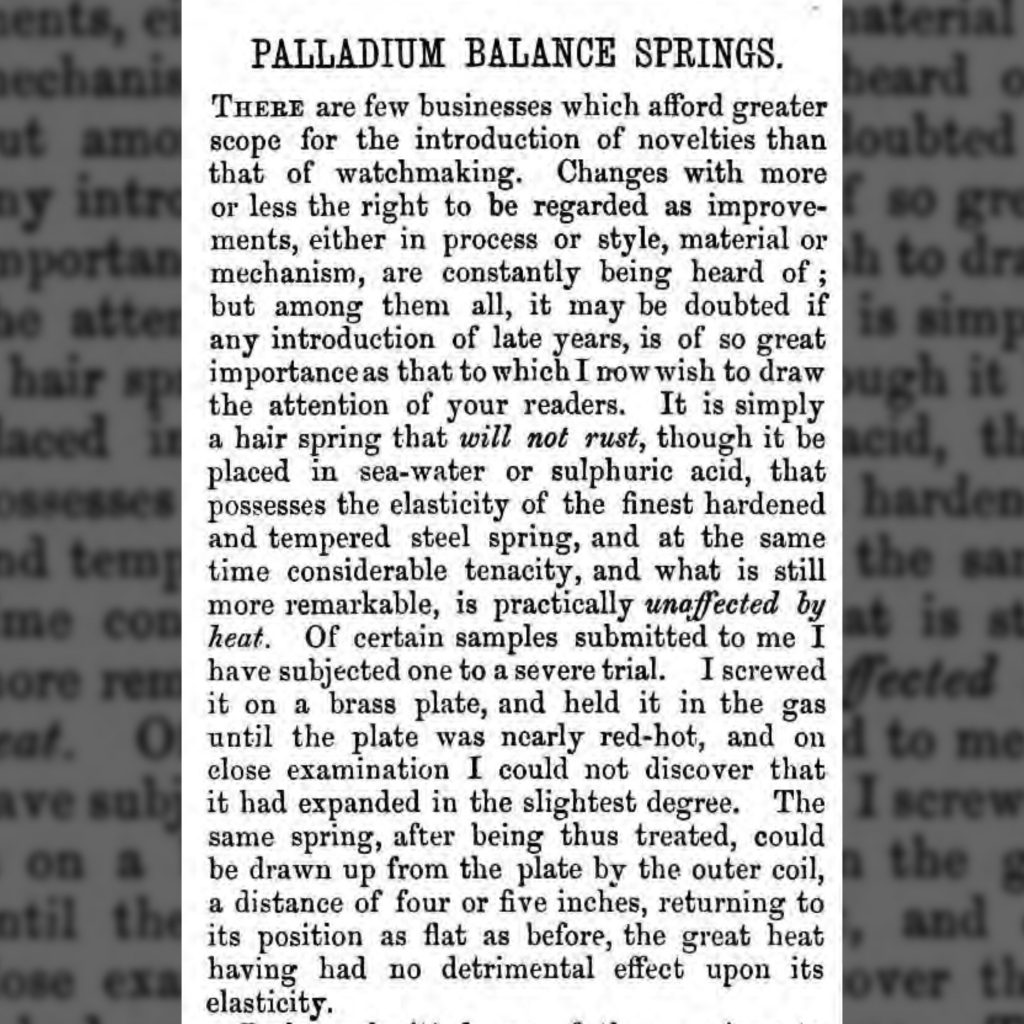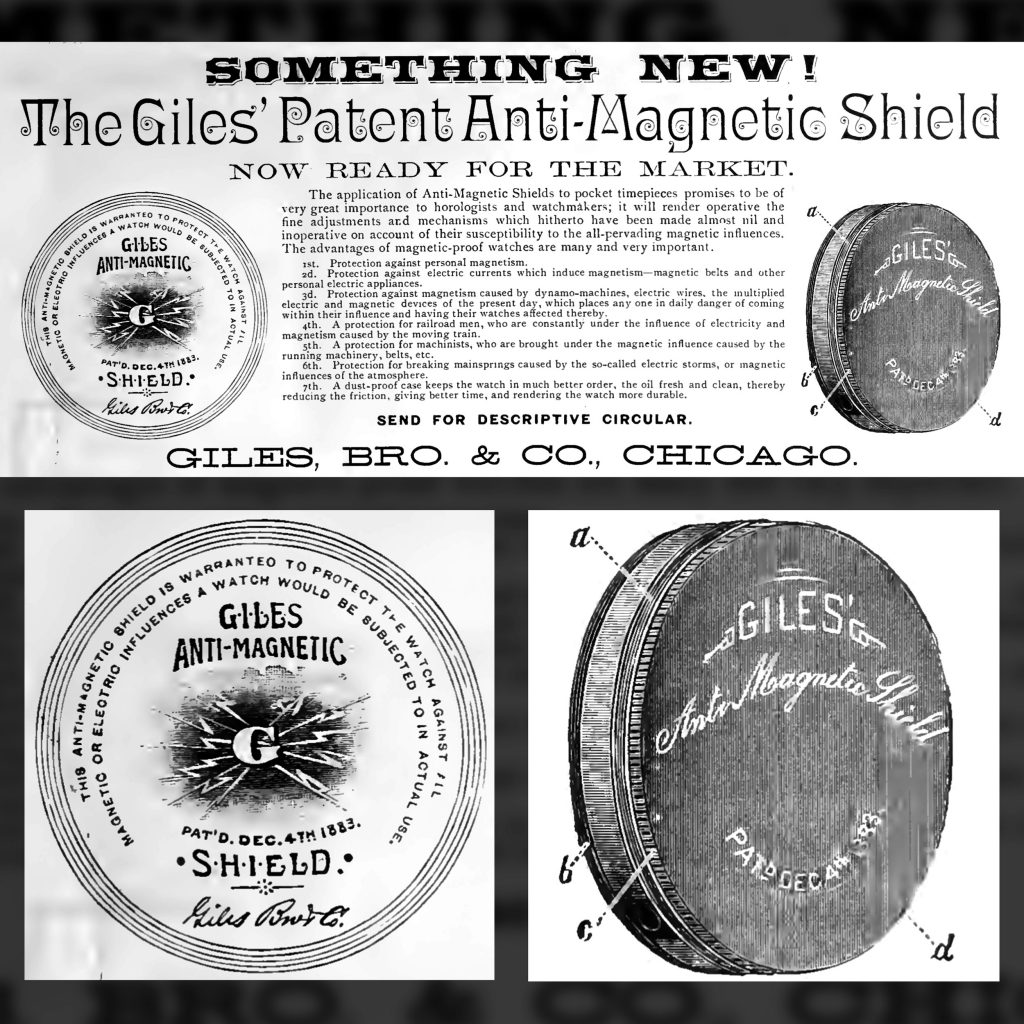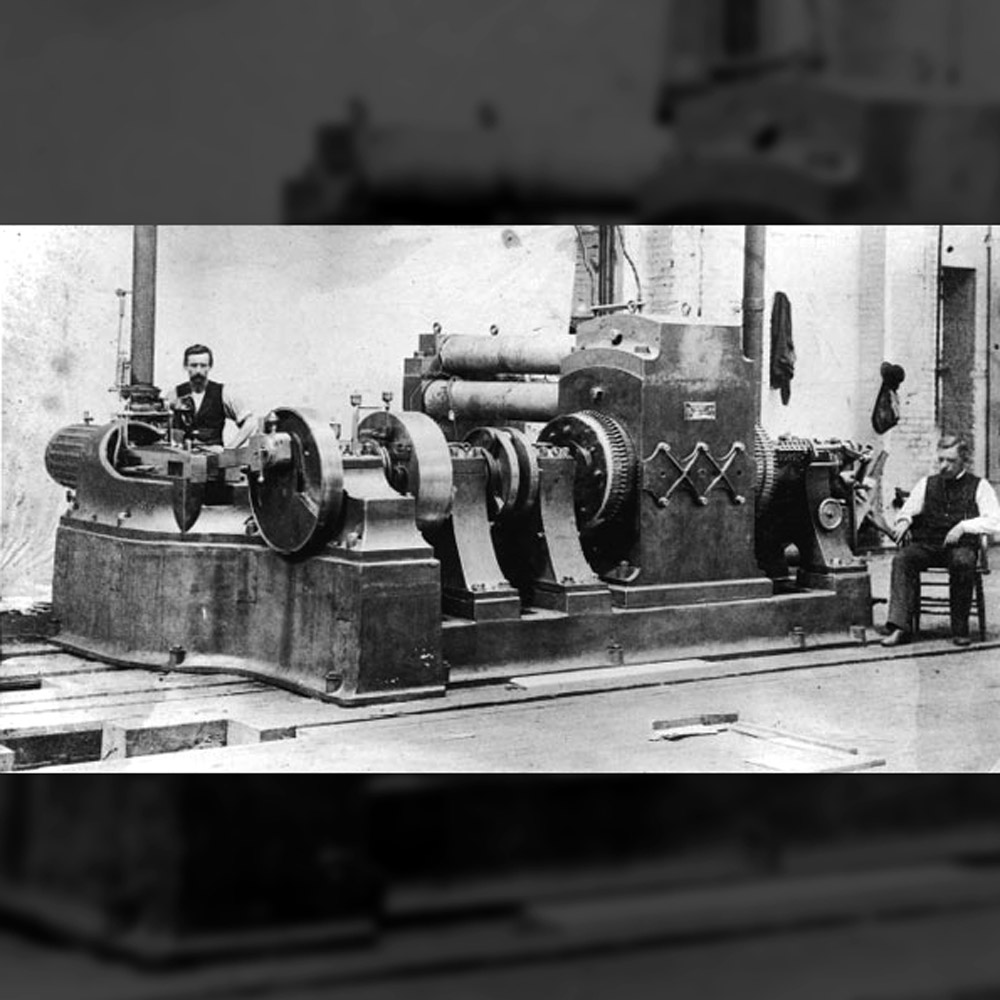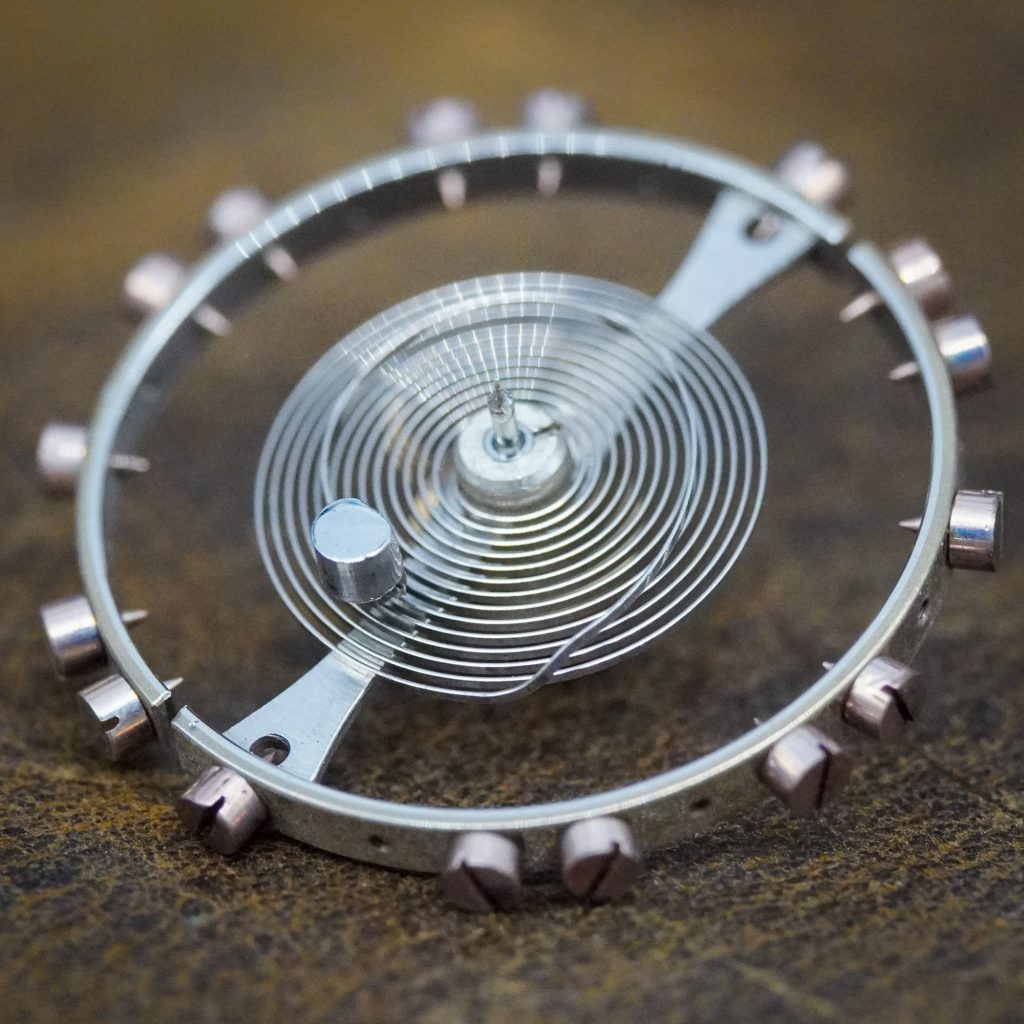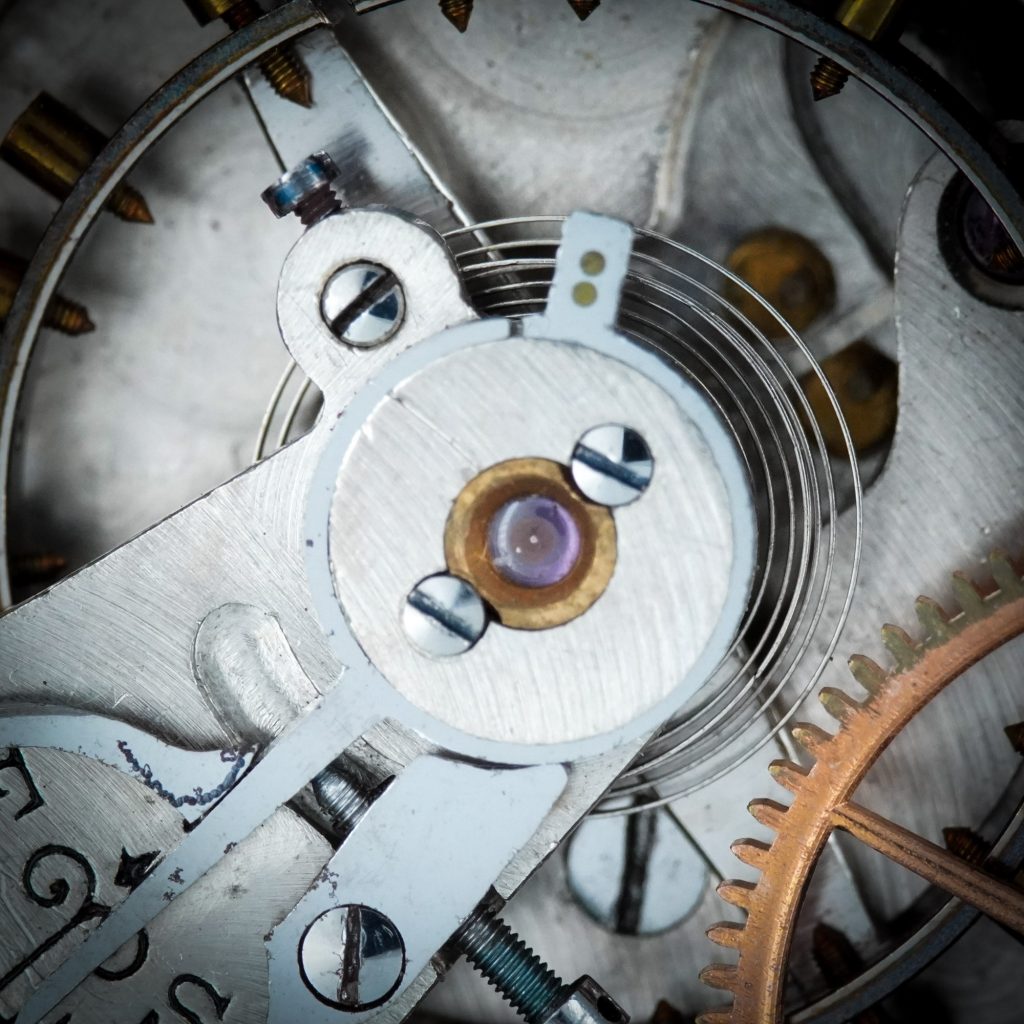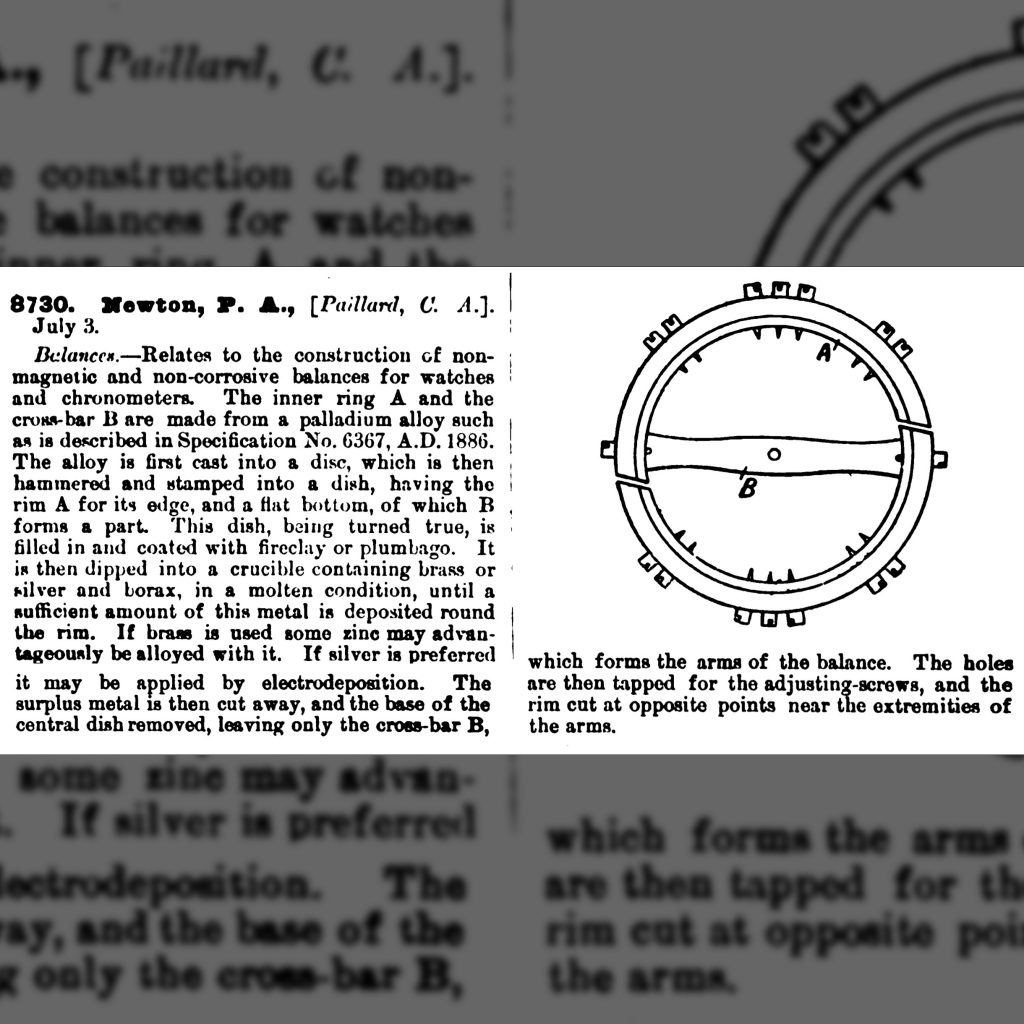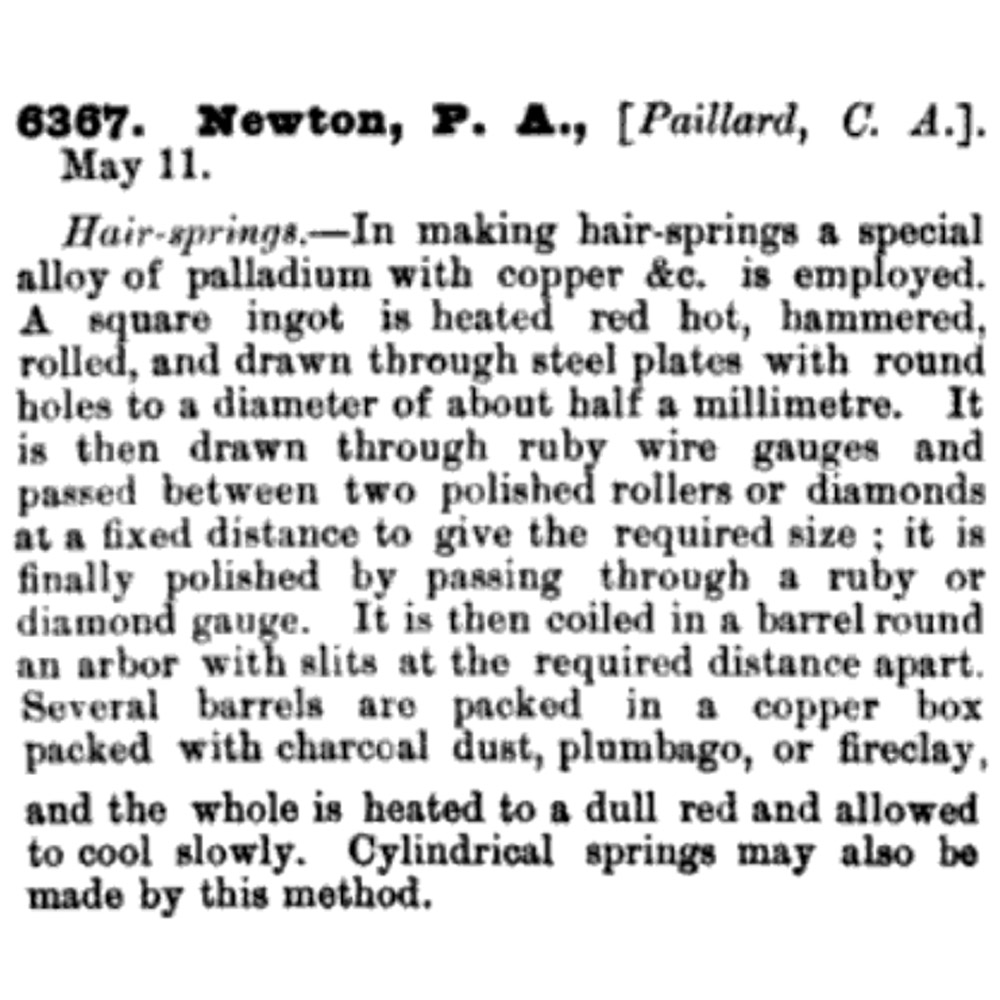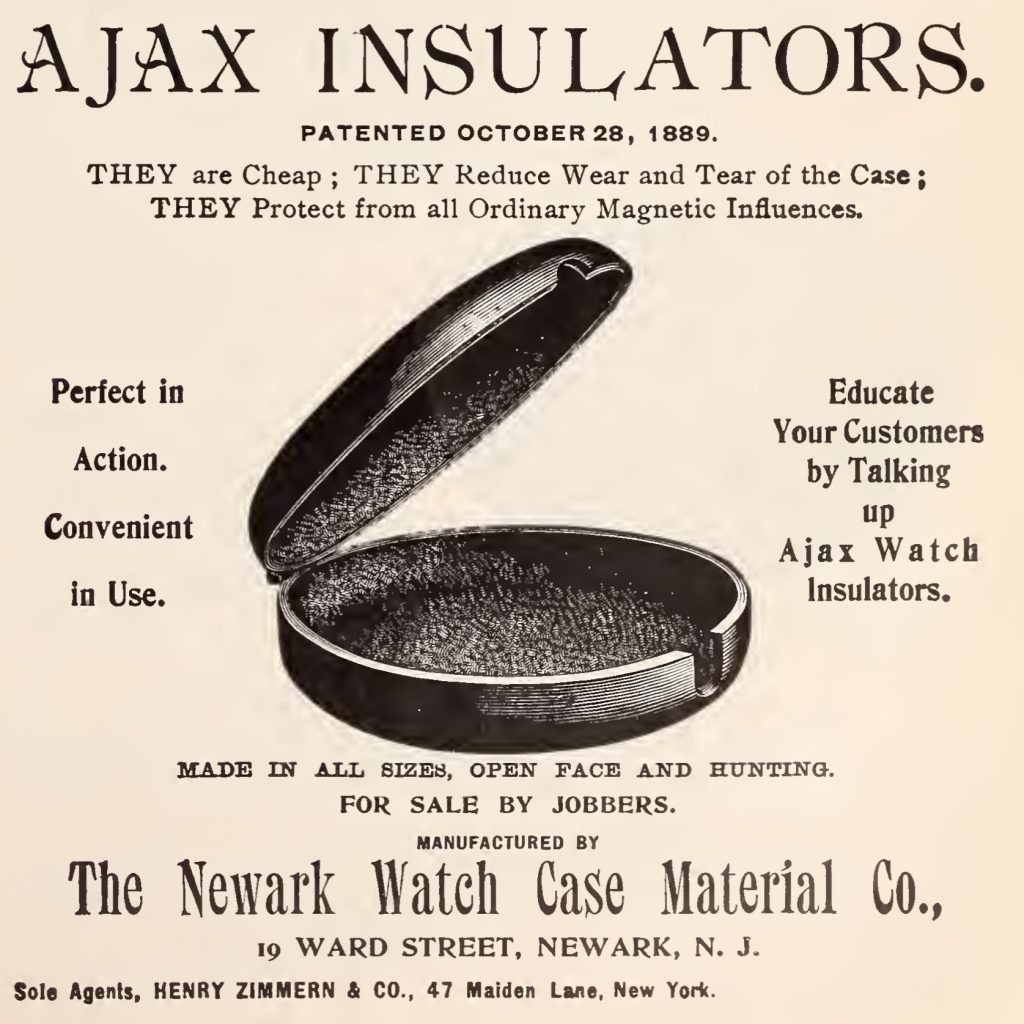
Author: Nathan Moore

Pictured: “The Giles Patent Anti-Magnetic Shield” Advertisement, The Jewelers’ Circular and Horological Review, 1884 (Unknown Issue) As electricity was being adopted across the globe in the 1880s, the watch industry.
Pictured: Thomas Edison’s Jumbo Dynamo (Electric Generator) Charles-Auguste Paillard originally developed palladium alloys for use in fine marine chronometers due to the non-corrosive properties of the alloy. In the 1880s,.
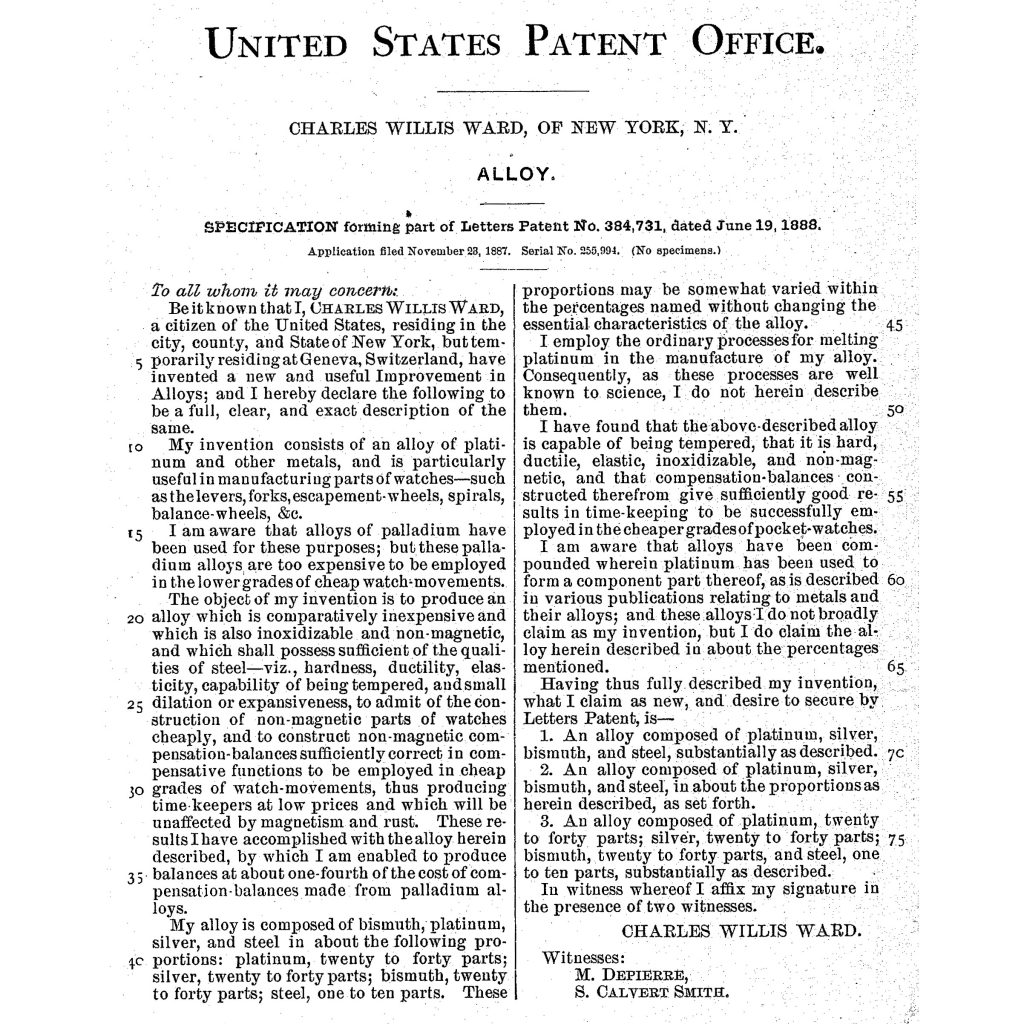
Pictured: Paillard’s Palladium Balance and Hairspring Charles-Auguste Paillard originally developed his palladium alloys to provide a more suitable material for the construction of fine marine chronometers. As a result of.
Pictured: Paillard’s Palladium Balance and Hairspring Charles-Auguste Paillard was granted a patent in the United States for his palladium alloy compensation balance on March 8, 1887. The remaining patents issued.
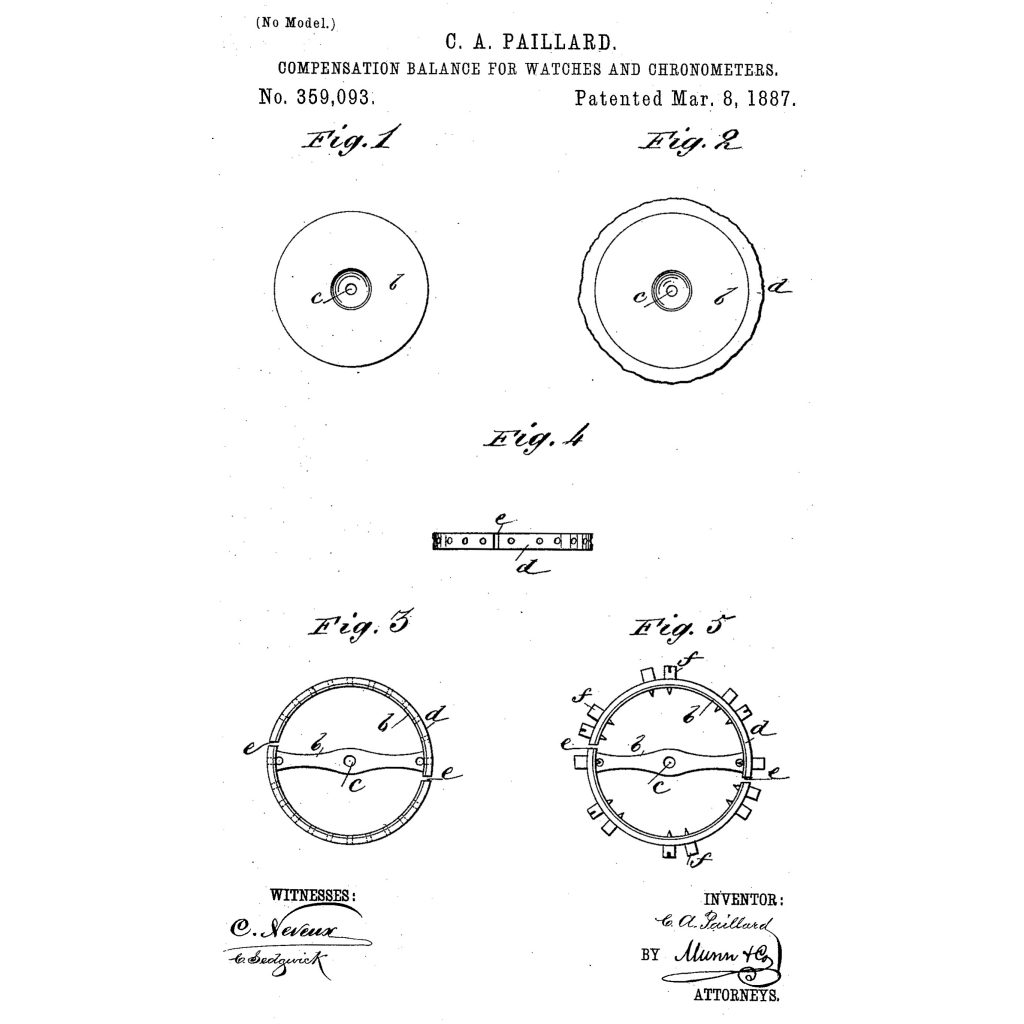
Pictured: C.A. Paillard’s Palladium Balance Abstract of English Patent #8730. While the most delicate part of a watch to be significantly affected by magnetism and corrosion is the hairspring, the.
Pictured: C.A. Paillard’s Palladium Hairspring English Patent #6367. In the late 1870s, after a decade of experimentation, Charles-Auguste Paillard successfully developed a palladium alloy that was immune to corrosion, featured.
